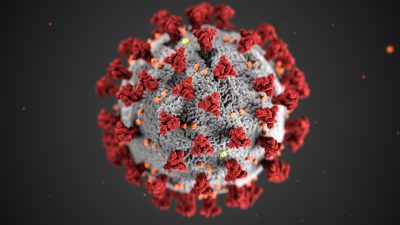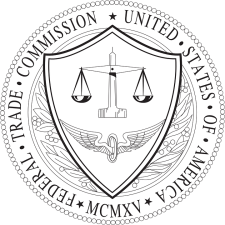These times are unprecedented. We at EyeMD EMR Healthcare Systems, Inc. are doing everything we can to help your practice get through these difficult times. If your practice is at risk of suffering financial hardships as a result of the COVID-19 outbreak, you have several forms of financial relief available to your practice that you should deeply consider. Business loss and unemployment can have permanent economic consequences. These financial programs are designed to help keep your business running and help retain all your employees.
Medicare Accelerated & Advanced Payments Program for Providers During COVID-19 Emergency
Accelerated and Advance Medicare Payments provide emergency funding and address cash flow issues based on historical payments when there is a disruption in claims submission and/or claims processing. These expedited payments are typically offered in natural disasters to accelerate cash flow to the impacted health care providers and suppliers. In this situation, CMS is expanding the program for all Medicare providers throughout the country during the public health emergency related to COVID-19. The payments can be requested by hospitals, doctors, durable medical equipment suppliers and other Medicare Part A and Part B providers and suppliers.
Amount of Payment: Qualified providers/suppliers will be asked to request a specific amount using an Accelerated or Advance Payment Request form provided on each MAC’s website. Most providers will be able to request up to 100% of the Medicare payment amount for a three-month period.
To qualify for accelerated or advance payments, the provider or supplier must:
- Have billed Medicare for claims within 180 days immediately prior to the date of signature on the provider’s/ supplier’s request form,
- not be in bankruptcy,
- not be under active medical review or program integrity investigation, and
- not have any outstanding delinquent Medicare overpayments.
Medicare will start accepting and processing the Accelerated/Advance Payment Requests immediately. CMS anticipates that the payments will be issued within seven days of the provider’s request.
An informational fact sheet on the accelerated/advance payment process and how to submit a request can be found here: www.cms.gov/files/document/Accelerated-and-Advanced-Payments-Fact-Sheet.pdf
Paycheck Protection Program (PPP) via the CARES Act
The Coronavirus Aid, Recovery, and Economic Security (CARES) Act (H.R. 748) provides $350 billion to fund a new loan program within the Small Business Administration’s (SBA) 7(a) program known as the Paycheck Protection Program (PPP).
Forgivable Small Business Loans
- PPP loans would have a 100% federal guarantee with no collateral or personal guarantee required. Borrowers would have to make a good faith certification that the loan is necessary due to economic uncertainty related to COVID-19, the funds will be used to retain workers & maintain payroll, lease, and utility payments, and they aren’t receiving duplicative funds from another SBA program.
- Eligible businesses would include those with 500 or fewer employees or that otherwise meet current SBA size standards; self-employed individuals & “gig economy” workers; and certain non-profits (including 501(c)3 organizations, 501(c)19 veteran organizations, and tribal businesses) with fewer than 500 employees.
- Maximum PPP loan amounts would be 250% of an employer’s monthly payroll, up to a maximum of $10 million.
- Loan forgiveness would be available for amounts spent on covered payroll costs & overhead during an 8-week period after the loan origination date.
- Covered payroll costs include salary, wages, and payment of cash tips up to an annual pay rate of $100,000 for an employee; employee group healthcare benefits, including insurance premiums; retirement contributions; and covered leave.
- Covered overhead would include interest payments on any mortgage incurred prior to February 15, 2020, rent payments on a lease in force prior to that date, and utility payments for service which began prior to that date.
- Loan forgiveness couldn’t exceed the principal amount of the loan. Forgiveness amounts would be reduced proportionally by any reduction in employees retained compared to the prior year & reduced by the reduction in pay of any employee beyond 25% of their prior-year compensation.
- PPP loan amounts not forgiven after one year would be carried forward as an ongoing loan with a maximum term of 10 years, a maximum interest rate of 4%, and the 100% federal loan guarantee would remain in effect.
- PPP borrowers that re-hire workers previously laid off during the crisis wouldn’t be penalized for having a reduced payroll at the beginning of the loan period.
- PPP loan payments could be completely deferred for at least six months but no more than one year.
- Loans would be available immediately through more than 800 existing SBA-certified lenders, including banks, credit unions, and other financial institutions.
- Borrowers with an existing Economic Injury Disaster Loan (EIDL) could apply for PPP payroll assistance, but if it isn’t a COVID-19-related EIDL loan they wouldn’t be able to re-finance into the PPP loan. The emergency EIDL grant award of up to $10,000 would be subtracted from the amount forgiven under the PPP.
- The SBA would be required to pay all principal, interest, and fees on all existing SBA loan products (excluding PPP loans) to provide relief to small businesses negatively affected by COVID-19.
In order to apply for an SBA 7(a) loan, reach out to your local banker to see if they are an approved SBA lender, or visit https://www.sba.gov/funding-programs/loans/lender-match to find a lender in your area. Even if your loan is not forgiven, this low-interest loan with flexible payment terms may be financially advantageous to your practice.
We hope that you find this information valuable. If you have any other ideas that can help practices through these difficult times, let us know!




 EyeMD EMR Named 2024 Best In KLAS: Ambulatory **Ophthalmology** EMR
EyeMD EMR Named 2024 Best In KLAS: Ambulatory **Ophthalmology** EMR